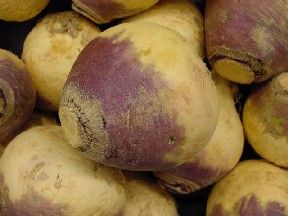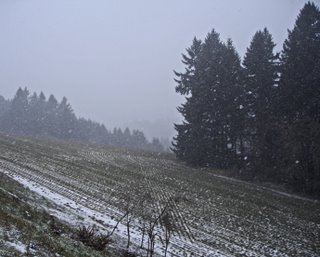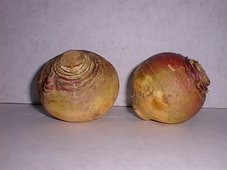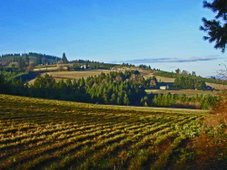
Welcome to the new and improved Rutabagan, sponsored by the Advanced Rutabaga Studies Institute in Forest Grove, Oregon, Rutabaga Capital of the World since 1951. Please be sure to visit and comment upon our popular website, where you'll learn that December, 2006, has been declared National Rutabaga Month!
To get things started, here's our Letter of the Day:
C.J.: "My mother-in-law refers to rutabagas as "rutabagie" (or "rutabaggie," "rutabagy," or "rutabaggy"; I've never asked her to spell it). At first, this just made me bite my tongue and chuckle quietly inside at family gatherings. But after some research, making rutabaga plural by adding a "y" or "ie" ending seems to have come from northern Europe somewhere. There is a reference to it in "The Roxburghshire Word-Book" by George Watson, but one needs a membership to JSTOR (www.jstor.org) to look at this online. Any idea where this all started?"
Thanks for your interesting query, C.J. The ultimate source on such etymological questions is the indefatigable Finnish rutascholar Hannu Ahok, who claims that the rutabaga resulted from the hybridization of turnips and cabbages by Finnish farmers. He states that Finnish immigrants "probably brought rutabagas to Sweden" after 1530. One of the three Finnish names for the rutabaga was raatikka, but the singular noun rotabagge first appeared in 1766 in the local dialect of West Gothia, Sweden. Rota means "root" and bagge means "ram" (as in "driven into the land" or possibly "ram's testicle"). So your mother-in-law's pronunciation may have evolved directly from the Swedish bagge, in which the final "e" could be rendered as the English -ie or -y. (Does she have any Swedish ancestry?)
Finnish immigrants to New Sweden (now Delaware) evidently brought the rutabaga to North America in the 17th century, when it was also introduced in western Europe and Siberia.
Source: On the Evolution, Spread and Names of Rutabaga, by Hannu Ahokas, Interdisciplnary Biology, Agriculture, Linguistics and Antiquities 1:1-32 (2004).
[Please note that many ARSI rutabotanists are now convinced that the turnip and cabbage are hybridized variations of the rutabaga, rather than the reverse.]
 In today's LETTER OF THE DAY, C.L. writes:
In today's LETTER OF THE DAY, C.L. writes:







